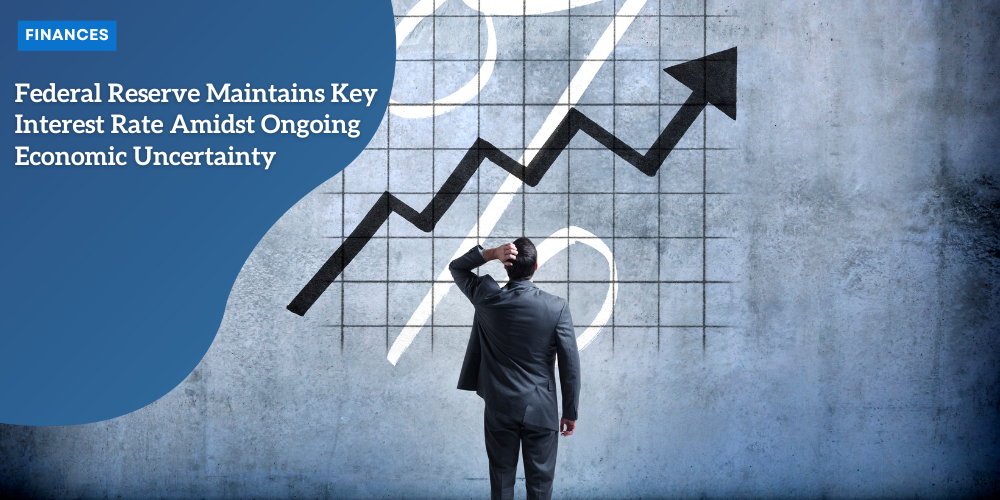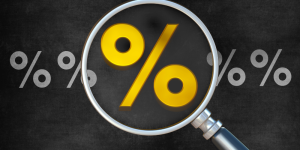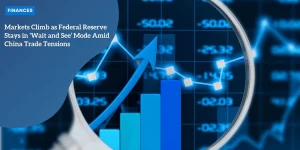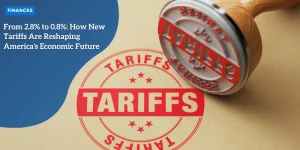Federal Reserve Maintains Key Interest Rate Amidst Ongoing Economic Uncertainty

Anúncios
The Fed’s Strategic Decision to Hold Interest Rates Steady as Economic Pressures Mount
The Federal Reserve has decided to leave its key interest rate unchanged, marking the third consecutive meeting in which it has maintained the benchmark federal funds rate.
This decision comes amidst a period of heightened economic uncertainty, particularly surrounding inflationary pressures and tariffs.
Federal Reserve’s Decision to Hold Interest Rates Steady
On Wednesday, the Federal Reserve confirmed that it would continue its policy of maintaining the federal funds rate at its current range of 4.25% to 4.5%.
This decision follows a series of deliberations by the Federal Open Market Committee (FOMC), which oversees the Fed’s monetary policies.
Anúncios
The FOMC’s latest statement highlighted that uncertainty about the economic outlook has increased significantly.
The Fed is closely monitoring risks associated with both inflation and unemployment as part of its dual mandate.
The current rate of 4.25% to 4.5% is the same as the rate set during the Fed’s previous meetings in January and March, following a series of reductions in 2024.
These previous rate cuts, which were implemented over three consecutive meetings, included a 50-basis-point reduction in September and two 25-basis-point cuts in November and December.

Anúncios
Economic Uncertainty and Its Impact on Policy Decisions
The Fed’s decision to hold rates steady signals that the central bank remains cautious in light of ongoing economic challenges.
According to Federal Reserve Chair Jerome Powell, the economic landscape is currently “solid,” but the level of uncertainty is exceptionally high.
While inflation has decreased significantly, Powell noted that it remains slightly above the Fed’s 2% longer-term target.
Powell further emphasized the ongoing challenges posed by recent shifts in U.S. trade policy, noting that the new administration is implementing substantial policy changes across four key areas: trade, immigration, fiscal policy, and regulation.
These changes are expected to have far-reaching implications for the economy, with tariff increases already surpassing initial expectations.
The effects of these tariffs, Powell warned, remain uncertain and could influence both inflation and economic growth.
If tariff increases continue, the resulting economic slowdown could lead to higher inflation and increased unemployment.
However, Powell also noted that the inflationary impact of tariffs could be short-lived or, alternatively, could prove to be more persistent, depending on the scale and duration of the tariff hikes.
Balancing Employment and Inflation: A Complex Decision
In response to a question about how the Fed would balance its dual mandate of fostering maximum employment and maintaining stable prices, Powell acknowledged the complexity of this challenge.
If inflation and unemployment were to rise simultaneously—a situation that could arise during a period of stagflation—the Fed would face difficult decisions.
Powell suggested that such a scenario would require a thorough assessment of the gap between current economic conditions and the Fed’s long-term goals, alongside expectations for how quickly the economy could return to its targets.
Despite the heightened uncertainty, Powell remained confident in the Fed’s current approach, stating that the central bank is in a “good place” and should await further clarity before taking any additional policy action.
This sentiment reflects the Fed’s cautious stance in navigating the evolving economic landscape.
Risks and Opportunities for Rate Cuts
Although some market analysts have speculated about potential interest rate cuts later in the year, Powell emphasized that any decision on rate cuts will depend on how the economy develops in the coming months.
The Fed will need to evaluate whether inflationary pressures subside or whether a more persistent rise in prices threatens to undermine economic stability.
Powell reiterated that the Fed would not rush into rate cuts but would instead prioritize careful monitoring of key economic indicators such as inflation, unemployment, and overall economic growth.
“There are cases in which it would be appropriate for us to cut rates this year. There are cases in which it wouldn’t, and we just don’t know,” Powell stated.
Market Reactions to Fed’s Decision
Following the Fed’s announcement, markets adjusted their expectations for future rate changes.
According to the CME FedWatch tool, the likelihood of the Fed maintaining its current interest rate range of 4.25% to 4.5% through its next two meetings increased significantly.
In June, the probability of holding rates steady rose from 69% to 75%, while the likelihood of maintaining the rate through July also increased from 22% to 30%.
This shift in market expectations suggests that investors anticipate the Fed will continue to prioritize stability over aggressive rate cuts in the near term.
However, as Morgan Stanley’s Chief Economic Strategist Ellen Zentner noted, the Fed acknowledges that there are still significant risks to both sides of its mandate—unemployment and inflation—due to the ongoing effects of tariff policies.
The Federal Reserve’s Patience and Market Expectations
Charlie Ripley, Senior Investment Strategist for Allianz Investment Management, commented on the Fed’s patient approach, noting that the central bank is demonstrating more restraint than some market participants might prefer.
He pointed out that while economic data remains volatile, the Fed’s decision to remain on the sidelines until more clarity emerges reflects a pragmatic stance in the face of uncertainty.
Ripley further emphasized that the current economic environment, with its mixed signals, requires a measured response from the Fed.
As the central bank continues to monitor the unfolding situation, it will remain ready to act when the data provides a clearer direction for the future.
Conclusion: Navigating an Uncertain Future
In conclusion, the Federal Reserve’s decision to hold interest rates steady underscores the complex economic environment in which policymakers find themselves.
While the economy is currently on solid footing, the risks associated with inflation, tariffs, and potential economic slowdowns remain high.
The Fed’s cautious approach highlights the importance of waiting for further clarity before making significant changes to its policy stance.
As the global economy continues to evolve, the Federal Reserve’s actions will remain critical in shaping the U.S. economic landscape.
The central bank’s ability to navigate the delicate balance between fostering growth, controlling inflation, and managing unemployment will be key to maintaining economic stability in the years to come.






